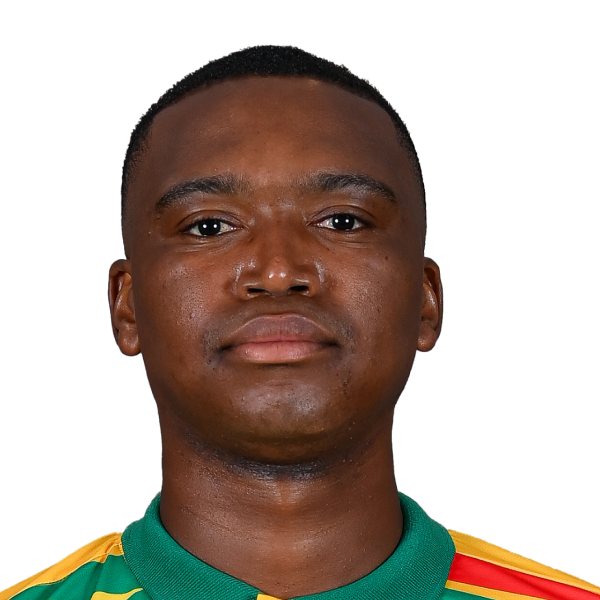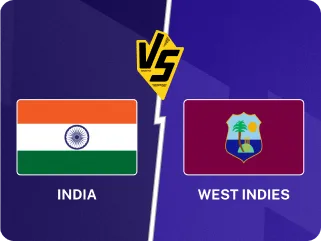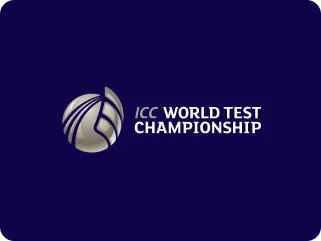
Thirty-three years before South Africa and Australia faced each other on Friday, Mackay hosted its only other men’s international match, lasting exactly two balls.
Thirty-three years before South Africa and Australia faced each other on Friday, Mackay hosted its only other men’s ODI, lasting exactly two balls.
The 1992 Benson & Hedges World Cup had a lot of firsts: from coloured clothing to white balls, floodlights and fielding restrictions, it set a template. It was also the first one in the southern hemisphere. Australia and New Zealand had beaten India and Pakistan for joint-hosting rights, and eleven Australian venues were chosen to host, including the Ray Mitchell Oval (now the Great Barrier Reef Arena) in Mackay.
The stadium, also doubling up as an Australian Rules Football ground – like several venues in Australia – didn’t have a rich cricketing history until that point. International cricket was yet to be played, but Mackay crowds in the past had experienced some international flavour. In 1968, the touring West Indians had faced off Queensland Country in a two-day game, where Rohan Kanhai scored 206 from No.3 (he didn’t hit a century across the five Tests that followed).
Two decades later, when Pakistan travelled to Australia and New Zealand, Mackay hosted its first-ever List A game. It was Aaqib Javed’s List A debut too, and the first time Saeed Anwar was playing in the format game for Pakistan. Interestingly, a full-strength Pakistan team was beaten by Queensland. They played again the following day, and Stuart Law made his List A debut.
Four years after that, Mackay – called the Sugar Capital of Australia – was all set for its first-ever international game. Despite it being a World Cup fixture, the game wasn’t set to be televised, given how remote the location was.
Read more: 150, 83, 57, 88: South Africa batter breaks world record to extend brilliant ODI career start
However, it became clear from the start that rain would be a highly disruptive force. Mackay had seen floods earlier, the most notable one a decade before Kanhai and team’s visit, when residents had to be rescued from rooftops by boats.
That Saturday, rain came pouring in before any play could start. The organisers would have been naturally edgy, but desperate to not let their first-ever international game go waste, they even availed the services of a helicopter to dry the ground. By lunch, members of the India team walked out on the ground, and entertained the crowd by shaking a leg.
“The only entertainment was afforded by the aerobic dancing of the Indian players seeking exercise at the lunch interval,” wrote Wisden. After five hours of delay, the ground was sufficiently dried up for a twenty-over game.
Sri Lanka won the toss and elected to bat. It was the ODI debut of Ajay Jadeja, who went on to feature in 195 more. Skipper Mohammad Azharuddin replaced Ravi Shastri (who was dropped) with Kapil Dev as Kris Srikkanth’s opening partner, possibly in an attempt to maximise the first few overs – a ploy adopted by several teams during the tournament.
Kapil did not get to bat: Srikkanth faced the only two balls delivered by Champaka Ramanayake before rain intervened, this time to abandon the game.
For 33 years, Srikkanth’s single – off Ramanayake’s second ball – was the solitary run in men’s internationals at the venue, until Ryan Rickelton drove Josh Hazlewood for a couple of runs on Friday.
Back then, in his column for the Indian Express, Azharuddin wrote: "I am obviously very disappointed with the result, because this was a game we had banked on to get us two points". India were now left to win five out of six games to have a chance of qualifying. They lost their next game to Australia by one run in a revised chase, beat Pakistan and Zimbabwe, before losing to West Indies, New Zealand and South Africa (two of those games were also rain-affected).
Barry Jansen, the then-president of Mackay Cricket Association, later revealed he had “pestered” Cricket Australia and Queensland Cricket into getting a World Cup game in Mackay.“We hadn’t had rain for months... but we had this storm where we had four or five inches the night before,” he recalled.
“I was interviewed by the Daily Mercury after the game and they said, ‘How did you feel?’. I said, ‘At one part of the day I went and sat on the toilet by myself with my head between my legs’. I was shattered. It was all very frustrating. If only we had a super-sopper back then we would have been laughing.”
Rain was an annoying constant throughout the 1992 World Cup, with the rain rule inviting controversy, most notably in the washout between England and Pakistan, and when South Africa’s chances of qualifying were dashed by 12 minutes of rain.
Between that game and today’s, the Great Barrier Reef Arena has hosted three women’s ODIs (one of which saw India famously end Australia’s 26-match winning streak) and two women’s T20Is, aside from Australian domestic games.
Yet, part of its history will always be the 1992 fixture, still the shortest ODI ever (where a ball has been bowled).
Follow Wisden for all cricket updates, including live scores, match stats, quizzes and more. Stay up to date with the latest cricket news, player updates, team standings, match highlights, video analysis and live match odds.












